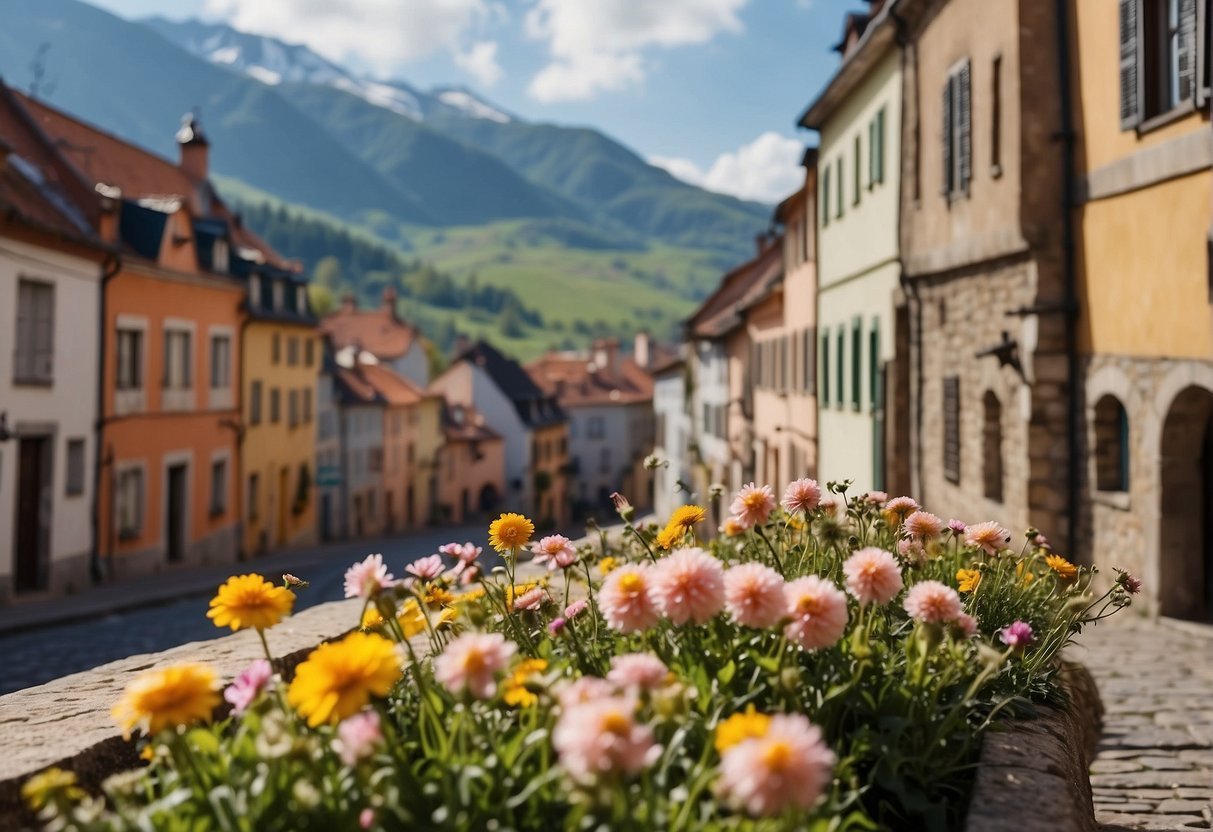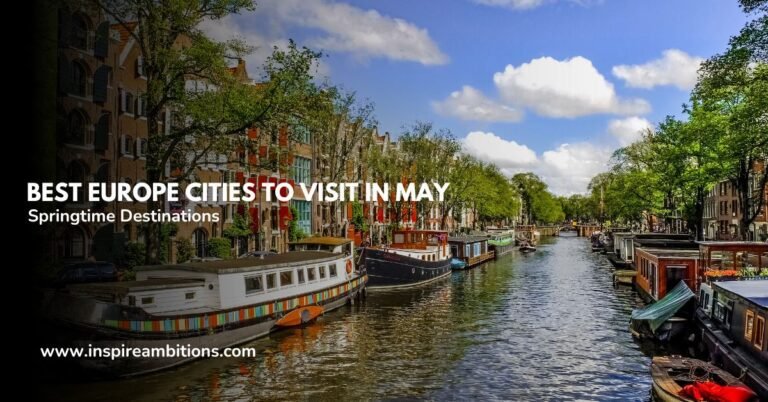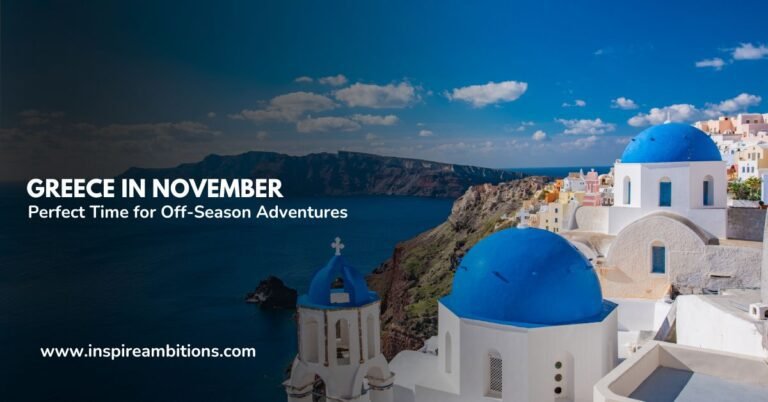Melhores lugares para visitar na Europa em março – Principais escolhas para viagens na primavera
March emerges as an ideal time to explore Europe, with the continent gently transitioning from winter’s grasp into the embrace of spring. This period allows travellers to discover the charm of European destinations while sidestepping the peak season crowds and experiencing the cultural rebirth accompanying the first signs of spring.
From the lush gardening of the lush garden countries to the still-coz still-cosy of the historic Eastern European cities, the continent presents a tapestry of experiences.

Outdoor enthusiasts find March in Europe particularly enticing, as it provides adventures with generally mild weather. Nature comes alive, and in places like the Canary Islands or the Mediterranean shores, you can bask in pleasantly warm temperatures ideal for beach activities.
Moreover, this month is also replete with unique festivals and events, providing a glimpse into the rich tapestries of local traditions and contemporary festivities. March presents a golden window for those seeking the quintessential European experience minus the queue. Savouring coffee at a serene café in Amsterdam, marvelling at the blooming landscapes of the countryside, or enjoying the off-season calm in usually bustling metropolises—you’ll find that Europe in March is about seizing these transient moments of peace before the summer rush sets in.
Best Places to Visit in Europe in March – Key Takeaways
- March is a time for fewer crowds and the start of spring in Europe.
- Warm destinations and vibrant festivals make March ideal for travel.
- Mild weather allows for a variety of outdoor activities across the continent.
Optimal Destinations for March Travel

Embarking on a European adventure in March allows you to witness the beginning of spring’s bloom and often milder crowds, making it an excellent time for a holiday. Explore Western Europe’s cultural cities or the sun-kissed shores of the Mediterranean; there’s something for every traveller in March.
Western Europe Highlights
- Paris, França: The City of Light begins to awaken in March with fewer tourists and a charman undeniably romantic charm of iconic landmarks like the Eiffel Tower and Louvre Museum without the crowds.
- Average March Temperature: 8-13°C
- Dublin, Ireland: March is a distinctive month to visit Dublin, with St. Patrick’s Day festivities bringing the city to life. Cultural events and parades offer a genuine, authentic Iranian experience.
- Average March Temperature: 5-10°C
Mediterranean Marvels
- Barcelona, Spain: March sees Barcelona shaking off the last chills of winter, with outdoor cafes and Gaudí’s masterpieces waiting for your exploration.
- Average March Temperature: 10-17°C
- Valência, Espanha: Alongside its historical marvels and vibrant culinary scene, you can enjoy Las Fallas in March – a fiery festival filled with traditional activities.
- Average March Temperature: 10-18°C
- Menton, France: This coastal gem on the French Riviera is ideal for peaceful walks along the beach and enjoying the mild Mediterranean climate.
- Average March Temperature: 9-16°C
Festivals and Events to Experience
March in Europe is a tapestry of cultural and seasonal festivities. You’ll find that it’s an ideal time to experience traditional celebrations and spring events that illuminate the continent’s diverse heritage.
Celebrações Culturais
In Spain, a paramount spectacle known as semana Santa occurs from Palm Sunday to Easter Sunday. Seville, in particular, is renowned for its elaborate processions that fuse religious devotion with rich artistic exhibitions.
- semana Santa (Seville): Enigmatic processions captivate thousands through Seville’s streets.
Down canary Islands, specifically in Santa Cruz de Tenerife, the pre-Lent Carnaval bursts with vibrancy, often rivalling travellings rivalling.
- Carnaval (Santa Cruz de Tenerife): Flamboyant costumes, samba beats, and lively parades.
Furthermore, Valência becomes the epicentre of festivities during Las Fallas, an event marrying tradition with pyrotechnics.
- Las Fallas (Valencia, March): Immerse yourself in a dramatic display of fire and artistry.
Spring Festivities
March invites you to don green and join in the festivities of St. Patrick’s Day. Though originating from Ireland, the celebrations were widespread across the European continent.
- St. Patrick’s Day (17th March): Celebrate all things Irish from Dublin to the far-flung pubs of Europe.
Portugal also contributes to the spring charm with the International Chocolate Festival em Óbidos, appealing to your sweet tooth and offering a taste of Portuguese chocolate craftsmanship.
- International Chocolate Festival (Óbidos): A delectable journey through the world of chocolate.
These festivities provide a glimpse into the region’s rich cultural mosaic, ensuring that your visit to Europe in March is both dynamic and unforgettable.
Outdoor Adventures and Nature Escapes
March invites you to experience Europe away from the chill of winter and before the summer crowds descend. It’s an ideal time to seek outdoor adventures and connect with nature, whether on sun-soaked beaches or in tranquil mountain retreats.
Ilhas e Praias
- Tenerife, Canary Islands: Explore the largest of the Canary Islands, boasting Mount Teide, Spain’s tallest peak.
- Atividades de aventura: Try windsurfing or paragliding on El Médano beach for a thrilling day out.
- Old Town Charm: Wander the old streets of La Laguna, a UNESCO World Heritage site which combines history with a youthful vibe.
- Valeta, Malta: Discover the stunning Mediterranean landscapes in Malta.
- Exploração Histórica: Visit the ancient city of Valletta, which has imposing fortifications and a wealth of history.
- Coastal Trails: Follow the coastal paths for scenic hikes that reward you with serene bays and historical sites.
Mountain Retreats
- Bled, Slovenia: A fairy-tale town set around a glacial lake surrounded by peaks.
- Lake Bled Island: Row across to an idyllic island church or circle the lake on foot or by bike.
- Outdoor Escapades: Indulge in the Julian Alps hiking, biking, and horse-riding trails.
- Suíça: A hub for mountain adventure sports from pristine skiing to captivating hiking routes.
- Skiing & Snowboarding: With the snow still settled in the Alps, seize the opportunity for late-season skiing.
- Bear Country in Sonfjället: For a unique encounter, venture into Sonfjället National Park, home to the elusive European brown bear.
Remember, as you venture into the natural habitats of these regions, respect the environment and local wildlife. Embrace the blend of excitement and tranquillity these European destinations offer in March.
Practical Travel Insights
Accommodation and Costs
You’ll likely find affordable accommodation options across Europe in March, as this month is part of the shoulder season. This period often results in lower prices due to the dip in tourist traffic following the winter holidays.
- Hotéis: Look for deals and book in advance to secure the best rates.
- Hostels: An economical option, especially in popular cities like Amsterdam.
Flight Tips
Cheaper flights can typically be found during March. With fewer holidaymakers, airlines might offer discounted fares to encourage off-season travel.
- Airfare: Check budget airlines and price comparison websites.
- Booking Time: Mid-week flights often come at a reduced cost.
Padrões climáticos
While Europe’s average temperatures in March can vary, southern and western regions generally offer warmer climates. Destinations like the Canary Islands boast pleasant weather, ideal for those seeking warm places to visit in March.
- Ilhas Canárias: Enjoy sunny days with temperatures conducive to beach outings.
- Mediterrâneo: Coastal areas feature mild weather, perfect for exploring without the summer heat.
Shoulder Season Advantages
March presents the unique advantages of the shoulder season, making it a practical time for travel in Europe.
- Shorter Queues: Reduced tourist numbers lead to shorter waits at attractions.
- Authentic Experience: Fewer crowds allow for a more genuine interaction with local culture and lifestyle.
By taking advantage of the shoulder season benefits, you can enjoy a fulfilling European travel experience with added cost savings and less tourist congestion.






